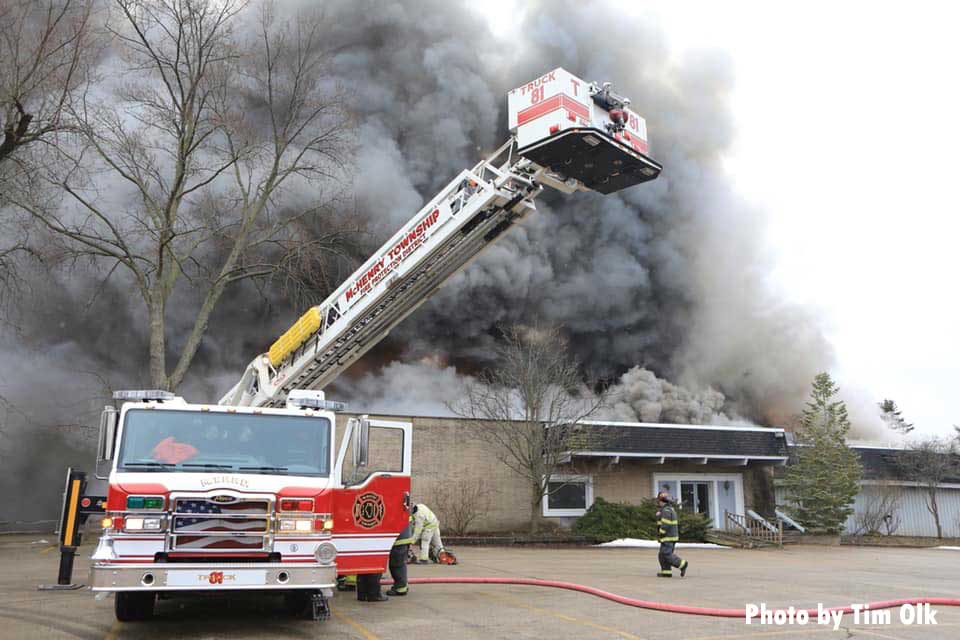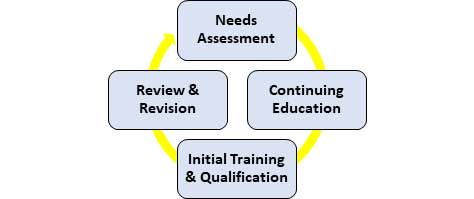Officer Development Programs, Part 2

By Rudy Horist
Welcome to the second article in our series on building an officer development program for your fire department. In the previous article, we discussed the importance of conducting a comprehensive needs assessment. This assessment helps identify the training needs of your department and forms the foundation for creating an effective program. Now let’s focus on the next step: prioritizing training topics based on their importance and relevance. By prioritizing your training, you can ensure that your officers receive the necessary skills and knowledge to excel in their roles.
- We Should Throw Ladders More Often
- Climbing the Ladder: From Officer to Chief
- Climbing the Ladder of Success in the Volunteer Fire Service

The Importance of Prioritization
After completing a needs assessment, you may find yourself with an extensive list of potential training topics. Prioritization is the key to managing this list effectively and ensuring that your officers receive the most relevant and valuable training. By categorizing topics into different levels of priority, you can allocate resources and time appropriately.
Three Levels of Priority
A simple yet effective method for prioritizing training topics is to use three levels: must know, need to know, and nice to know. Each level corresponds to the importance and relevance of the topic to your officers’ roles and the overall mission of your fire department.
- Priority 1: Must Know. These topics are crucial for the safety and survival of your firefighters. They include skills and knowledge mandated by national, state, or local standards, as well as those identified as essential by your department and officers. It also includes those topics related to incidents and situations that are low-frequency/high-severity or high-frequency/high-severity. Examples of must-know topics include fire behavior, building construction, initial size-up, and incident command.
- Priority 2: Need to Know. These topics are necessary for delivering the best possible service but may not have the same level of urgency as priority 1. They may not be mandated but should be covered periodically to maintain proficiency. Examples include coaching, labor contract, daily station procedures, severe weather procedures, completing performance evaluations, and incidents or situations that are of a lower frequency or severity.
- Priority 3: Nice to Know. These topics are less critical to firefighting effectiveness and safety. They may cover areas with minimal likelihood or low-severity incidents. Nice-to-know topics can be taught on a one-time basis or every few years, depending on your department’s needs. Examples include department budgeting, department history, orientation to other city/village departments, media relations, and public education.
Identifying Your Top Priorities
With the three levels of priority established, it is time to determine your top training topics. Consider the specific needs and challenges of your department and identify the most critical areas for improvement. By focusing on a manageable number of topics, you can ensure that your training efforts are efficient and effective.
The Power of Six
A good starting point is to initially focus on your top six training topics. This number provides a specific target and allows for easy scheduling, whether it’s six training sessions per year or a higher frequency. However, feel free to adjust this number based on the resources and capacity of your department. The goal is to create a realistic plan that can be expanded or adjusted over time.
Incorporating Training into Ongoing and Initial Programs
Once you have identified your top priorities, it’s essential to determine whether each topic should be included in your ongoing training, initial training, or both. Some topics, especially those in priority levels 1 and 2, are crucial for both new officers and experienced ones. Others may be more suitable for specific stages of an officer’s career.
Consider whether the training topic aligns with state certification requirements for fire officers. Additionally, evaluate if the topic requires recurring training or if it can be covered once and not repeated. This evaluation will help you create a well-rounded and comprehensive program.
Remember that the specific categorization of topics will vary depending on your department’s needs and goals. Adapt the framework to suit your unique circumstances and make adjustments as necessary.
*
Prioritizing training is a critical step in developing an effective officer development program. By categorizing topics into must-know, need-to-know, and nice-to-know levels, you can allocate resources effectively and ensure that your officers receive the most relevant and valuable training. Identifying your top priorities and incorporating them into ongoing and initial training programs will help you create a comprehensive and tailored program that meets the needs of your fire department.
Next we will delve into the specifics of designing your ongoing or continuing education for officers.
Rudy Horist is chief of the McHenry Township (IL) Fire Protection District with 39 years of service. He has a master’s degree in public safety administration from Lewis University and is a graduate of the Executive Fire Officer Program at the National Fire Academy.

